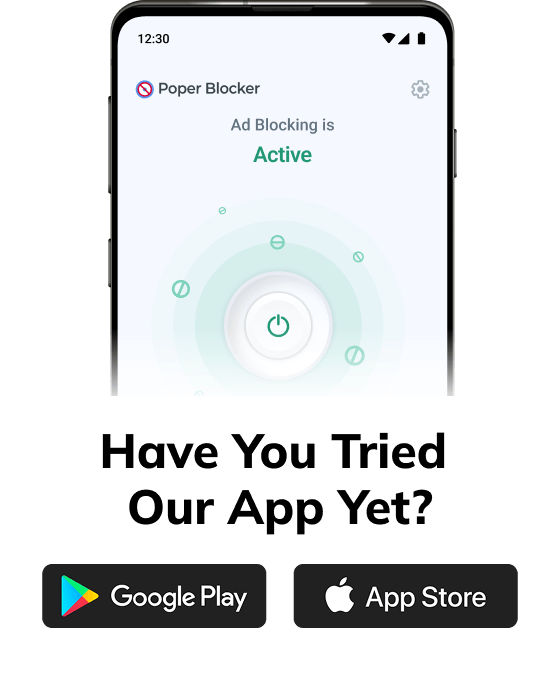What Is Ad Tracking?
Ad tracking, often perceived as a shadow in the vast online landscape, is a sophisticated process where companies monitor your internet activities. This surveillance is not just about observing; it’s about compiling a detailed profile based on your digital footprints. Every website visit, every click, and even the time spent on specific content contribute to this profile.
So what are ad trackers? Their primary goal is to tailor advertisements to your unique interests and online behavior. It’s a strategy that transforms generic advertising into a personalized marketing experience. For instance, if you spend time looking at sports equipment on various e-commerce sites, don’t be surprised to see ads for related products popping up on different websites and social media platforms.
This targeted approach is designed to increase the likelihood of you engaging with the ads, and potentially, making a purchase. While it can lead to discovering products that genuinely interest you, it also raises significant privacy concerns. Your information and behavior can become valuable data for advertisers:
- Online preferences
- Shopping habits
- Personal information like location and age
This data collection is relentless and often occurs without explicit consent, making understanding and managing ad tracking an essential aspect of maintaining online privacy. With digital ad spending projected to hit an astounding $876 billion by 2026, as reported by Statista, taking steps to restrict these tracking activities has never been more crucial.
Types of Ad Tracking
Ad tracking employs various techniques, each with its unique way of gathering user data:
1. Tracking Pixels
These are minuscule, almost invisible 1×1 pixel images embedded in emails and web pages. Their size makes them virtually undetectable to users. Despite their inconspicuous nature, they are powerful tools for tracking user interactions.
Here’s what happens: When you open an email or visit a webpage containing these pixels, they send information back to the server. This data can include whether an email was opened, which links were clicked, and even the device used for access.
2. Tracking URLs
These are specially crafted web addresses that track user behavior after clicking on them. They look like standard URLs but have additional parameters attached. When you click on a tracking URL, it records where you came from, allowing marketers to understand the effectiveness of their campaigns.
For example: A link in a marketing email might use a tracking URL including UTM parameters to see how many recipients clicked through to the website.
3. Cookies
Perhaps the most well-known tracking method, cookies are small data files stored on your browser. They track and remember your online activities, such as site preferences, login details, and items in your shopping cart. While some cookies enhance user experience by remembering useful information, others are used extensively for tracking purposes.
These cookies collect data on the sites you visit, the products you view, and the purchases you make, contributing to a detailed profile for targeted advertising.
What Information Do Ad Trackers Collect?
Ad trackers are like digital detectives, gathering a wide array of information to create a detailed profile of your online behavior.
- One primary data point is your browsing history. Trackers monitor the websites you visit, how long you stay on each page, and what content you engage with. This information helps advertisers understand your interests and preferences.
- Search history is another crucial element. The terms you search for provide direct insight into your current interests and needs. Whether you’re looking up a new gadget or searching for a recipe, these searches are valuable indicators for advertisers.
- Purchase history is also collected, especially from e-commerce sites. Items you buy, those you add to your cart but don’t purchase, and even the ones you just view, all feed into your consumer profile.
- Interaction with ads is closely monitored too. Trackers note which ads you click on, which you ignore, and how you interact with them. This feedback is vital for advertisers to gauge the effectiveness of their ads.
- Personal information such as age, location, and even device type is often collected. While some of this data might be provided directly by you, other bits are inferred from your online activities.
Together, these data points allow ad trackers to build a comprehensive profile, enabling advertisers to target you with precision, often in real time. While this can lead to more relevant ads, it also raises significant privacy concerns, highlighting the importance of understanding and managing ad tracking.
How to Limit Ad Tracking Using Poper Blocker
Poper Blocker stands as a formidable tool in the fight against intrusive ad tracking, offering several features to enhance your browsing privacy:
1. Tracker Blocking
This feature is your digital shield against trackers. When activated, Poper Blocker blocks the code that tracks your personal data and browsing behavior. This not only protects your online privacy but also contributes to faster site loading times.
Activating this is straightforward: open the extension, navigate to Advanced Settings, and enable “Stop sites from tracking you.” This action disrupts the trackers’ ability to build a comprehensive profile of your online activities.
2. Cookie Consent Message Blocking
Poper Blocker’s cookie blocker automatically deals with persistent cookie consent pop-ups. Blocking these requests and rejecting access to cookies, significantly reduces the trackers’ ability to monitor your online behavior.
To activate this feature, simply go to Advanced Settings and turn on “Hide cookie requests.” This ensures a smoother browsing experience, free from constant interruptions.
3. Ad & Pop-up Blocking
Beyond tracking and cookies, Poper Blocker excels in eliminating unwanted ads and pop-ups. This feature blocks basic pop-ups that open in new windows or tabs and advanced pop-ups that appear on the page you’re viewing.
To enable this, access Advanced Settings and activate “Block basic popups” and “Block advanced popups (overlays).” This comprehensive blocking not only enhances your privacy but also declutters your digital space, allowing for a more focused and enjoyable browsing experience.
More Methods to Limit Ad Tracking
While tools like Poper Blocker are effective, combining them with other strategies can further enhance your privacy. Here are additional methods on how to stop ad tracking:
1. Browse Incognito
Utilizing the incognito or private browsing mode in your browser is like moving through the online world with a cloak of invisibility. This mode ensures your browsing history and search records are not stored, making it harder for ad trackers to compile data about your online activities.
While incognito mode doesn’t block trackers inherently, it prevents the accumulation of your browsing data in a single session, offering a layer of privacy.
Learn how to use Poper Blocker in Incognito mode.
2. Turn off Cookies on Your Browser
Cookies are the footprints you leave behind on every website you visit. Turning them off in your browser settings is another strategy on how to block ad tracking.. While essential cookies necessary for website functionality will still operate, disabling non-essential cookies significantly cuts down the data available to trackers.
This step, however, may change your browsing experience, as sites won’t remember your preferences or login details.
3. Use a Private Browser
Opting for a browser designed with privacy in mind is like choosing a fortified vehicle for your journey through the internet. These browsers typically come with built-in features that resist tracking, such as:
- Default incognito mode
- Integrated ad blockers
- Enhanced encryption
While they don’t guarantee complete invisibility from trackers, they significantly reduce your online visibility to them.
Taking Control: Your Power in the Online Advertising World
As we wrap up this exploration of ad tracking, it’s clear that while we can’t completely escape the watchful eyes of digital advertisers, we have significant power in managing our online footprint. Understanding the mechanisms of ad tracking and employing tools like Poper Blocker empowers us to assert control over our digital experiences. This journey is about striking a balance between enjoying personalized content and maintaining our cherished privacy.
Every step you take, from using tracker blockers to browsing in incognito mode, fortifies your defense against unwanted digital surveillance. This journey towards a more private online experience is ongoing, and staying informed is key. Take these insights and tools, and turn the tables on ad tracking, making your online world a space where you dictate the terms of your digital interactions.
Don’t let ads track you – download Poper Blocker for protection
FAQs
Can ad trackers access my personal emails?
Ad trackers typically don’t access the content of your personal emails directly. However, if you click on links or ads within emails, trackers can follow your online activity from that point. Email platforms may use their own tracking systems to collect data on email engagement, which is separate from typical ad tracking.
Does disabling cookies completely stop ad tracking?
Disabling cookies significantly reduces ad tracking but doesn’t completely stop it. Trackers can still use other methods like browser fingerprinting or tracking pixels embedded in websites. However, disabling cookies does disrupt the most common tracking method, making it a worthwhile step for enhancing privacy.
How does ad tracking influence my online shopping?
Ad tracking can tailor your shopping experience by showing you products that align with your previous searches and purchases. This can be both beneficial and intrusive. On one hand, it can lead to discovering relevant products; on the other, it can result in an overwhelming number of targeted ads and potentially impulsive buying.
Is total anonymity from ad trackers achievable online?
Achieving complete anonymity is challenging due to the sophisticated methods used by trackers. However, using tools like Poper Blocker, browsing in incognito mode, and employing a privacy-focused browser can significantly reduce your digital footprint. Remember, some level of tracking is almost always in play when you’re online.
Do ad blockers affect how websites function?
Ad blockers can sometimes interfere with website functionality, especially on sites that rely heavily on ad revenue or have integrated ads into their navigation. This can lead to issues like broken web pages or restricted access. However, most ad blockers offer the option to disable blocking for specific websites, allowing you to maintain functionality where needed.
Ready to block ads? Get Poper Blocker for a cleaner browsing experience!


